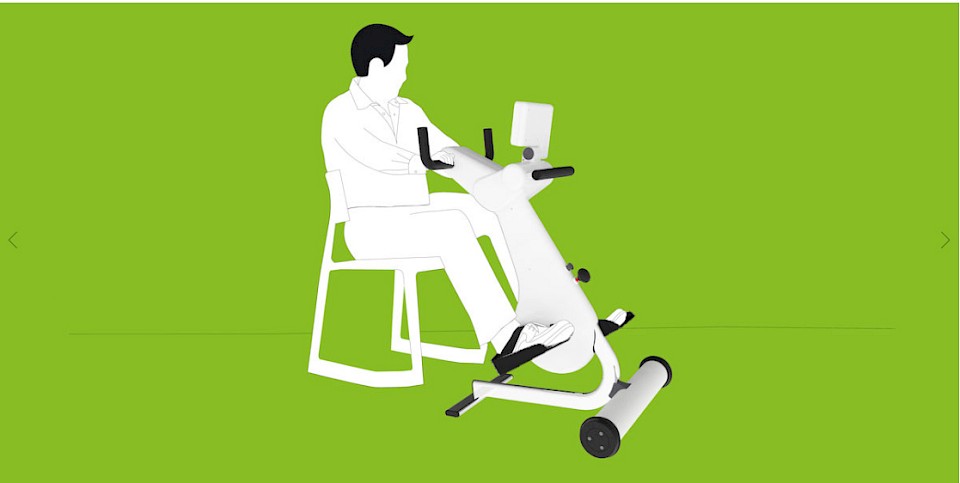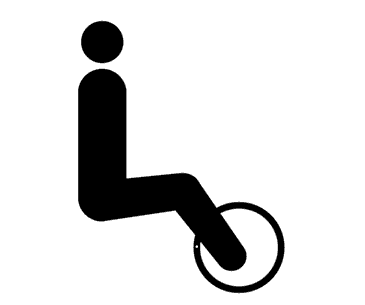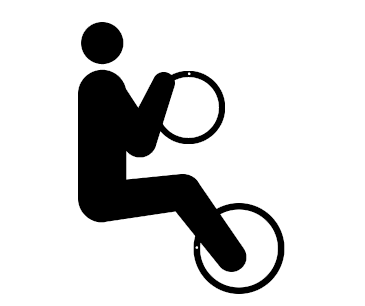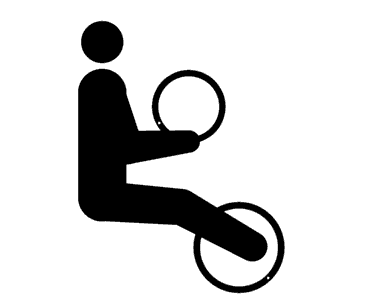Parkinson
Forced Exercise
With the therapeutic movement concept “forced exercise”, the lower extremities of Parkinson’s patients get moved noticeably faster than the symptoms of their disease would normally allow them to do. A group of researchers (Ridgel et al., 2009) from the US found out that movement speeds of up to 90 rpm help to improve Parkinson-related symptoms. Moreover, a significant improvement of the finger’s fine motor skills about 30% could be measured.
Regular movement therapy in combination with medicine is the basis for recent Parkinson’s therapy. The MOTOmed parkinson models (next generation: MOTOmed loop p.l and MOTOmed loop p.la; classic: MOTOmed viva2 Parkinson) have a software-controlled motor, which enables a movement training with high revolution speed. Parkinson patients can either train passively or actively with own muscle strength. Therapy sessions with the MOTOmed viva2 Parkinson can have positive effects on gait ability, balance, akinesia, fine motor skills and posture. Regular therapy training with the MOTOmed viva2 Parkinson also helps to improve Parkinson-related symptoms such as tremor (trembling muscles) and rigor (stiff muscles).
Scientific study
Configure your personal MOTOmed
Use the MOTOmed Product Configurator to configure your MOTOmed according to your requirements. Quickly, easily and without obligation. Try it out and configure your personal and individualized MOTOmed now.
MOTOmed Movement Therapy
MOTOmed Movement Therapy was developed for people with movement restrictions and complements physical, ergo and sports therapy measures. Users can train while seated in a wheelchair or from a chair.
In Germany, the device-based movement therapy with the MOTOmed is recognized as an aid for many indications by the statutory health insurance. It is worthwhile to inform yourself!
Therapy modes
passive
The effortless motor driven movement is ideal for the regulation of muscle tone, loosening stiff muscles and for early mobilization after long rests. Passive training stimulates blood circulation, digestion and joint flexibility.
assistive
In motor-supported movement therapy, the function MOTOmed ServoCycling enables easy transition from passive to active training. A motor-supported movement stimulates strength and endurance even with minimal muscle strength.
active
An active training with own muscle power against finely adjustable resistance levels strengthens leg, arm and upper body muscles and stimulates the cardio-vascular system.
Achieving best therapy goals through interval training
Alternating phases of strain and recreation (intervals) through active and passive training give a higher training stimulus which leads to a better therapy success.
Therapeutic goals
- Promote walking
- Reduce the consequences of lack of movement
- Activate residual muscle strength
- Strengthen the psyche and well-being
- Counteract fatigue
Videos
Scientific studies and research results about the MOTOmed movement therapy (forced exercise) in Parkinson's
4.10) Pereira-Pedro K.K., Machado de Oliveira I., Cancela Carral J.M., Mollinedo Cardalda I. (2023). Effects of MOTOmed® movement therapy on the motor function and main symptoms of patients with Parkinson’s disease: a systematic review. Retos: nuevas tendencias en educación física, deporte y recreación, 47, 249-257., DOI: 10.47197/retos.v47.93936
4.9) Ridgel A., Phillips R. S., Walter B. L., Discenzo F. M., Loparo K. A. (2015). Dynamic high-cadence cycling improves motor symptoms in Parkinson’s disease. Frontiers in Neurology, 6, 194., DOI: 10.3389/fneur.2015.00194
4.8) Stuckenschneider T., Helmich I., Raabe-Oetker A., Froböse I., Feodoroff B. (2015). Active assistive forced exercise provides long-term improvement to gait velocity and stride length in patients bilaterally affected by Parkinson‘s disease. Gait & Posture, 42(4), 485-490., DOI: 10.1016/j.gaitpost.2015.08.001
4.7) Corbett D.B., Peer K.S., Ridgel A.L.(2013). Biomechanical muscle stimulation and active-assisted cycling improves active range of motion in individuals with Parkinson‘s disease. NeuroRehabilitation, 33(2), 313-322, DOI: 10.3233/NRE-130961
4.6) Ridgel A.L., Peacock C.A., Fickes E.J., Kim C.-H. (2012). Active-Assisted Cycling Improves Tremor and Bradykinesia in Parkinson’s Disease. Archives of Physical Medicine and Rehabilitation, 93 (11), 2049-2054., DOI: 10.1016/j.apmr.2012.05.015
4.5) Fickes E.J. (2012). Effects of interval active-assisted cycling on balance in individuals with Parkinson’s disease. Dissertation, Kent State University.
4.4) Ridgel A.L., Kim C.-H., Fickes E.J., Muller M.D., Alberts J.L. (2011). Changes in Executive Function After Acute Bouts of Passive Cycling in Parkinson‘s Disease. Journal of Aging and Physical Activity, 19(2), 87-98., DOI: 10.1123/japa.19.2.87
4.3) Laupheimer M., Härtel S., Schmidt S., Bös K. (2011). Forced Exercise – Auswirkungen eines MOTOmed-Trainings auf parkinson typische motorische Dysfunktionen. Neurologie & Rehabilitation, 17(5/6), 239-246.
4.2) Ridgel A.L., Peacock C.A., Fickes E.J., Kim C.-H.(2010). Effects of active-assisted cycling on upper extremity motor and executive function in Parkinson’s disease. Presentation at the Society of Neuroscience Meeting 2010.
4.1) Ridgel A.L., Vitek J.L., Alberts J.L. (2009). Forced, Not Voluntary, Exercise Improves Motor Function in Parkinson’s Disease Patients. Neurorehabilitation and Neural Repair, 23(6), 600-608., DOI: 10.1177/1545968308328726









